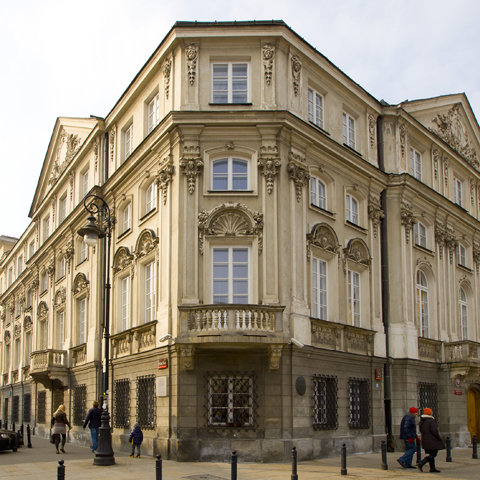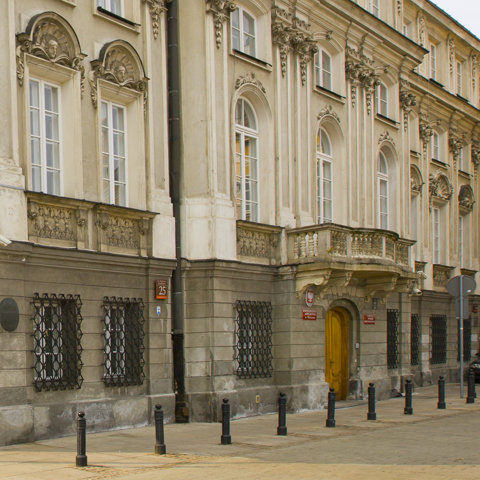Composers / Fryderyk Chopin / Places catalog
Saxon Post Office
‘The mail coach was to the nineteenth century what the car was to the twentieth: the most popular means of transport’, writes Stanisław Milewski in his Podróże bliższe i dalsze, czyli urok komunikacyjnych staroci [Travels near and far, or the beauty of old forms of transport]. The coach was inextricably linked to the postal service, the official provider of transport for people and packages, the work of which dated back to antiquity. The first regular postal connection in Poland was introduced by King Sigismund II Augustus in 1558 and operated between Krakow and Venice, and his successor added a Krakow to Warsaw connection. The Polish-Lithuanian Commonwealth postal service had its heyday during the reign of Ladislaus IV.
In Chopin’s day, the main post office was housed in a building situated between ul. Krakowskie Przedmieście, ul. Trębacka and ul. Kozia, and it was commonly known as the Saxon Post Office or Wessel Palace. The edifice was erected in the mid eighteenth century as the residence for the Bishop of Krakow, Andrzej Stanisław Kostka Załuski. The postal service purchased the building in 1780 and occupied it until 1874.
The building was designated as the reference point from which the distance from Warsaw was measured. Both the post office and the post horse establishment were housed here. The mail coach office was added later. There were coach houses and stables at the rear. ‘Mail coaches departed from here to the sounds of the brass post horns blown by the postilions,’ continues Milewski, ‘with which they were obligatorily supplied, along with a buggy whip. They were dressed in green jackets with crimson collars and sleeves and wore a heraldic badge on their left shoulder. Leather trousers, spurred boots and a lacquered hat bearing the postal coat of arms completed the picture’.
Fryderyk Chopin sent his baggage to the Saxon Post Office on 2 November 1830, prior to leaving Warsaw – unaware that he was leaving for good. The regulations required that trunks and bags be sent at least two hours prior to departure, so we can assume that Chopin, along with his family, appeared on the corner of ul. Trębacka and ul. Krakowskie Przedmieście at around five in the afternoon. Henryk Nowaczyk tells us that, as the first leg of the composer’s planned route took him to Kalisz, a ticket to secure him a place on the coach would have cost 32 zloty and 8 groszy (to cover a distance of 32 ¼ miles). A ticket guaranteed a particular seat in the coach beforehand, so Chopin, having left his baggage with the coachman, set off through the streets of Warsaw in a light carriage so as to spend his last few hours waiting for the coach at the Wola tollbooth in the company of the friends who were seeing him off. It was here that he boarded the coach, which then left in the direction of Ołtarzew.
-

Krakowskie Przedmieście 25. Phot. Waldemar Kielichowski.
-

Krakowskie Przedmieście 25. Phot. Waldemar Kielichowski.
-

Krakowskie Przedmieście 25. Phot. Waldemar Kielichowski.